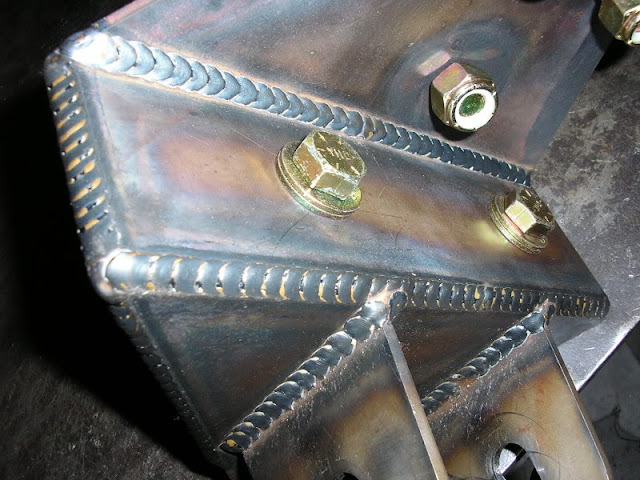many times the local community college will offer classes as well.
but if someone just wants to burn some rod they can stop by my shop, i'll put them to work.
Put them to work, I LIKE IT!
many times the local community college will offer classes as well.
but if someone just wants to burn some rod they can stop by my shop, i'll put them to work.
You can use your dryer outlet with a appropriate sized extension cord (10 AWG), it is most likely a 30 amp circuit which will be somewhat limiting...
I have a 60 amp circuit for my welder on 240 volts, but I have a large machine with a max of 280 amps, I doubt I will ever need to weld 1/2" steel in my garage, however...
Your best bet, particularly if you have single phase power, and most likely, that is all you have available is to get a 50 or 60 amp circuit run. This will require 6 AWG wire and a 4 prong outlet, get the adapter for your welder, it is only $20 and will convert the 4 prong outlet to a 3, which your welder will likely require...
I could have put the circuit in myself, but I don't go into the mains enough to eliminate the likelyhood of electrocution, so I had it done for $500...
This is getting as bad as an anchor thread. I'm all geared up to go shopping but now I don't know what to buy. Maybe I'll just start with getting a 220v outlet installed in the shop. Or maybe I can run a really long extension cord to the 220v dryer outlet in the laundry room.
All good if you are after the agricultural but strong look and don't get me wrong, that does have its place
But if you want astheticaly pleasing, Tig is the answer.
I have everlast equipment inexpensive Chinese stuff just finished an aluminum hard top 3/16 sheet , schedule 80 pipe , quarter inch for the feet. I have a 200 amp machine yeah it was running maxed out but worked fine burned out my spool gun .So I put a Teflon liner in my mig gun and it works fine .I also have a 250 amp TIG AC DC yeah I go both ways rarely use it ,it is just for detail stuff light gauge most everything is done with mig ,again quit talking and start welding
Compared to a good TIG weld that is indeed VERY ugly. There is spatter, obvious overheating, slag. It will be rusting badly in less than a year. If a SS fab shop delivered that to my boat it would be rejected in seconds.Here is an example MIG weld, not ugly by any means...

What looks OK on a 500' workboat looks like crap on a 40' yacht. They are also steel, not SS, a 'material' differenceShips are built with flux core MIG, is that "agricultural"?????
It sounds like an urban myth.Since you guys are so knowledgeable about welding. I read a long time ago to never weld while wearing contact lenses. No matter the strength of your shield. Some story circulating about a guy who basically fused his lens to his eyeball.
Is this true??
I don't think that is true - certainly done that with no problems. There is a big difference in the wavelength and energy of the arc radiation though. When welding TIG I make sure every bit of skin is covered. 5 or 10 minutes welding with bare neck, knees poking through jeans, wrists uncovered, will give you a serious sunburn. That can happen with MIG or stick as well, but takes a lot more time.Since you guys are so knowledgeable about welding. I read a long time ago to never weld while wearing contact lenses. No matter the strength of your shield. Some story circulating about a guy who basically fused his lens to his eyeball.
Is this true??
As a result of this discussion I have been googling and watching welding tutorials and a number of them do say to remove contact lenses. One source said it's not the light though, the hood protects your eyeballs so it'll protect your contacts too, optically, but it's more an issue of the fumes and gasses potentially deteriorating the hydroscopic plastic. A rank amateur like me shouldn't post anything on welding though, that's just what some of the tutorials said. Kind of makes me wonder if the fumes can fry your contacts, can't be good for your eyeballs either. Uh oh, now I have to buy a $1500 closed breathing system hood.
